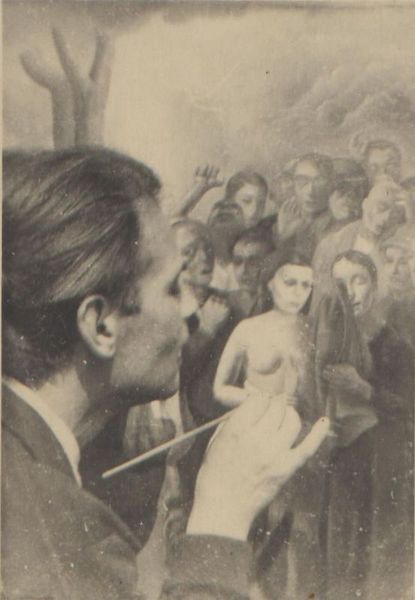
Felix Nussbaum painting "The storm" (the exiles), 1941
Unlike any other artist of the first half of the century, the painter Felix Nussbaum, born in Osnabrück in 1904 and murdered at Auschwitz in 1944, recorded the experiences of the decades following the First World War in his paintings and reflected upon them as part of his own situation, which the artist, as a Jew, was pushed into by the racist ideology of national-socialist Germany. His pictures are shaped by the contemplative security of the province, the rapid success in the art metropolis of Berlin, consistent with the spirit of the age, the menace and disorientation of emigration, the threat of war and bomb war, the fear in internment camp, isolation in the underground and hideout, and finally the suffering and annihilation of the Jews in Europe by the Nazi regime. No other victim has artistically documented the "Holocaust" of Jews in Europe like Nussbaum. For him, in his hopeless situation, painting became an act of resistance, because it enabled him to retain his human dignity and, for a long time, gave him the strength he needed to survive. He was a recorder of this era, and became its victim.
The artist Felix Nussbaum cannot be assigned to the avant-garde; he belongs to the ''lost generation'', born around 1900, whose artistic development was impeded, like no other generation, by the circumstances of the time, cut off and finally forgotten. Their rediscovery only commenced in the 1970s.
This is also when the Cultural History Museum of Osnabrück started to become preoccupied with the painter Felix Nussbaum. The Cultural History Museum of Osnabrück has carried out research into the life and works of Felix Nussbaum for over twenty years. In the course of time, the largest collection of works by this artist emerged in the museum, comprising more than 200 pictures. They are supplemented by documents containing biographical, contemporary and political elements that enable the experiences behind his pictures to be recognised as a political legacy: as a request and obligation not to forget what happened. This obligation was at last met in 1998 when the Felix Nussbaum Haus, designed by the architect Daniel Libeskind, was opened. The complete works of Felix Nussbaum have been exhibited here since March 1999, in accordance with his wish:''Even if I perish, do not let my pictures die, show them to the public.
Wegen Umbau geöffnet


Eine private Führung ist die angenehmste Art, die Werke, die Ausstellungen und die Architektur im Museumsquartier kennen zu lernen.
Mit diesem Formular senden Sie uns eine unverbindliche Anfrage. Wir melden uns anschließend schnellstmöglich per E-Mail bei Ihnen zurück.


Zoom:

1x
